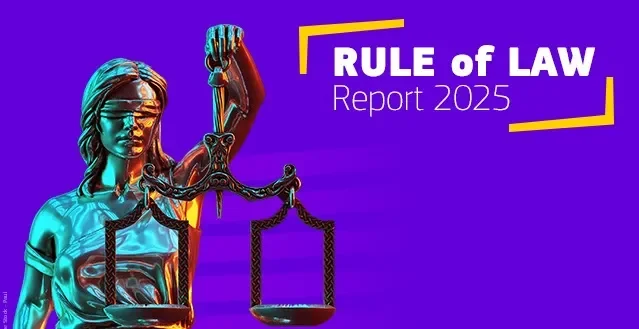
Dr. Beatrice Monciunskaite (Dublin City University)
On the 8th of July 2025, the European Commission published its sixth round of annual Rule of Law Reports. These reports form the basis of the EU’s annual Rule of Law Cycle, which is a preventative and dialogical tool designed to preserve the rule of law amongst EU member states that aims to prevent rule of law issues from emerging or worsening. For the last two years, the reporting cycle has included not only EU member states but also the EU candidate countries of Albania, Montenegro, North Macedonia and Serbia. The Reports are a soft-law measure aimed at taking stock of rule of law developments within the EU every year covering four key areas: justice systems, anti-corruption frameworks, media pluralism, and institutional issues related to checks and balances.
Despite the reports’ soft-touch approach to rule of law monitoring, they nevertheless play an important role in fostering a culture of rule of law amongst civil society. It acts as a record-keeping tool that complements more concrete mechanisms in the EU’s Rule of Law Toolkit, such as the infringement procedure, and has become a valuable tool in helping gather evidence of rule of law breaches that may fall within the scope of the Rule of Law Conditionality Regulation.
Since the annual Rule of Law Reports launched in 2020, they have been (rightfully) subjected to scrutiny from the academic community. The reports were criticised for providing only a superficial analysis of rule of law compliance in individual member states, and for failing to grasp the incremental and subtle way rule of law backsliding had been manifesting in certain member states, primarily Hungary and Poland. Back in 2021, I also published an article which highlighted inconsistencies in the Commission’s reporting of judicial independence concerns in Lithuania. Criticism of the reports was also prevalent on the point that the methodology of gathering sources for writing these reports was questionable, as domestic ‘stakeholders’ evaluated their own country’s compliance with the rule of law, which raised questions around the objectivity of the sources. A significant point of contention for many when it came to the Rule of Law Reports was that they had limited utility as a soft-law tool, because initially they only listed issues with the rule of law in a disconnected way, without recommendations or guidance on how exactly issues were to be rectified. This led many to condemn the Reports as a paper-shuffling exercise which produced a façade that the Commission was doing something about the EU rule of law crisis, but that was in fact just as ineffective as the so-called ‘dead’ Article 7 TEU procedure.
The Commission has listened to the above concerns, however. It has emphasised that it draws from a wide variety of sources when gathering information on member states’ compliance with the rule of law standards. Perhaps the most significant improvement to the reports since their launch in 2020 has been the introduction of recommendations and guidance in each country’s report, which has aimed to make the reports more constructive rather than purely descriptive. Now, each report takes stock of a member state’s progress in addressing the recommendations from the previous cycle, as well as highlighting new concerns.
Whether these tweaks to the report have made a substantive difference to their efficacy depends on who one asks. The fact remains that despite the inclusion of concrete recommendations in the reports, they still remain a soft law measure which does not in itself have any sanctioning power. This being said, the annual Rule of Law Reports have an important function within the EU’s rule of law protection infrastructure. As I argued in my 2021 paper, the reports serve as a record-keeping tool which brings to light rule of law concerns before they threaten to escalate into full-blown crises and measures progress (or deterioration) of the situation over time and in a systematic way. By itself, this could seem like a pointless exercise as no sanctions can be imposed by the reports, but their utility lies in that they complement other more forceful tools such as the Conditionality Regulation or the infringement process. The complementary role of the reports lies in their ability to contextualise rule of law concerns in member states and highlight to the national governments, international community and civil society the emerging or continuing rule of law issues in a country. This puts the member state concerned ‘on notice’ that their rule of law breaches have not gone undetected. This, of course, is primarily a preventative tool, but the record of the concerns documented by the reports can be used as evidence if further action should need to be taken to protect the rule of law.
With this utility of the Rule of Law Reports in mind, it is imperative that the reports accurately reflect the rule of law situation in each member state, avoiding biased sources and fragmented analyses of rule of law conditions. By doing this, the reports also serve to achieve a more subtle goal, but one that perhaps will yield the greatest gains for the rule of law into the future – fostering a culture of rule of law protection amongst EU citizens at the grassroots level.

Dr. Beatrice Monciunskaite is an Assistant Professor at the School of Law and Government, Dublin City University. Her research focuses on rule of law issues and comparative constitutional law in Central and Eastern Europe.



